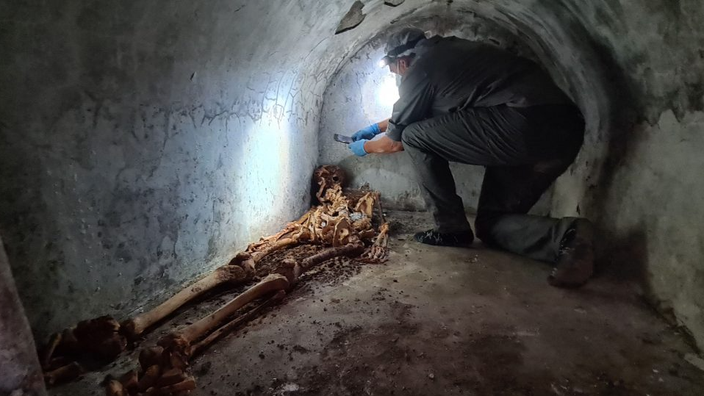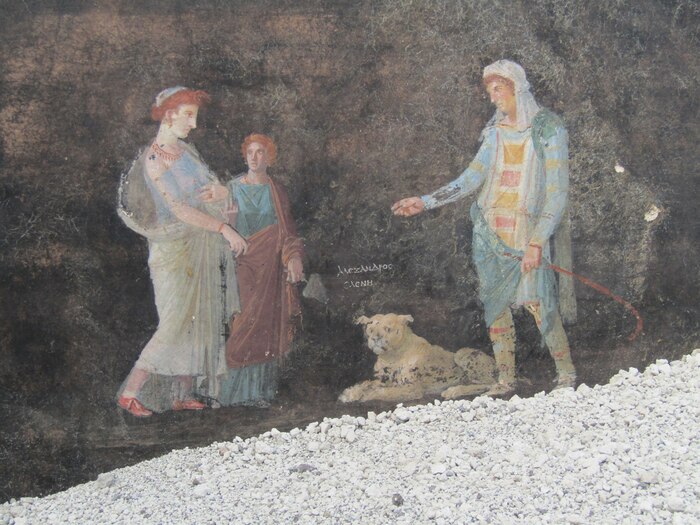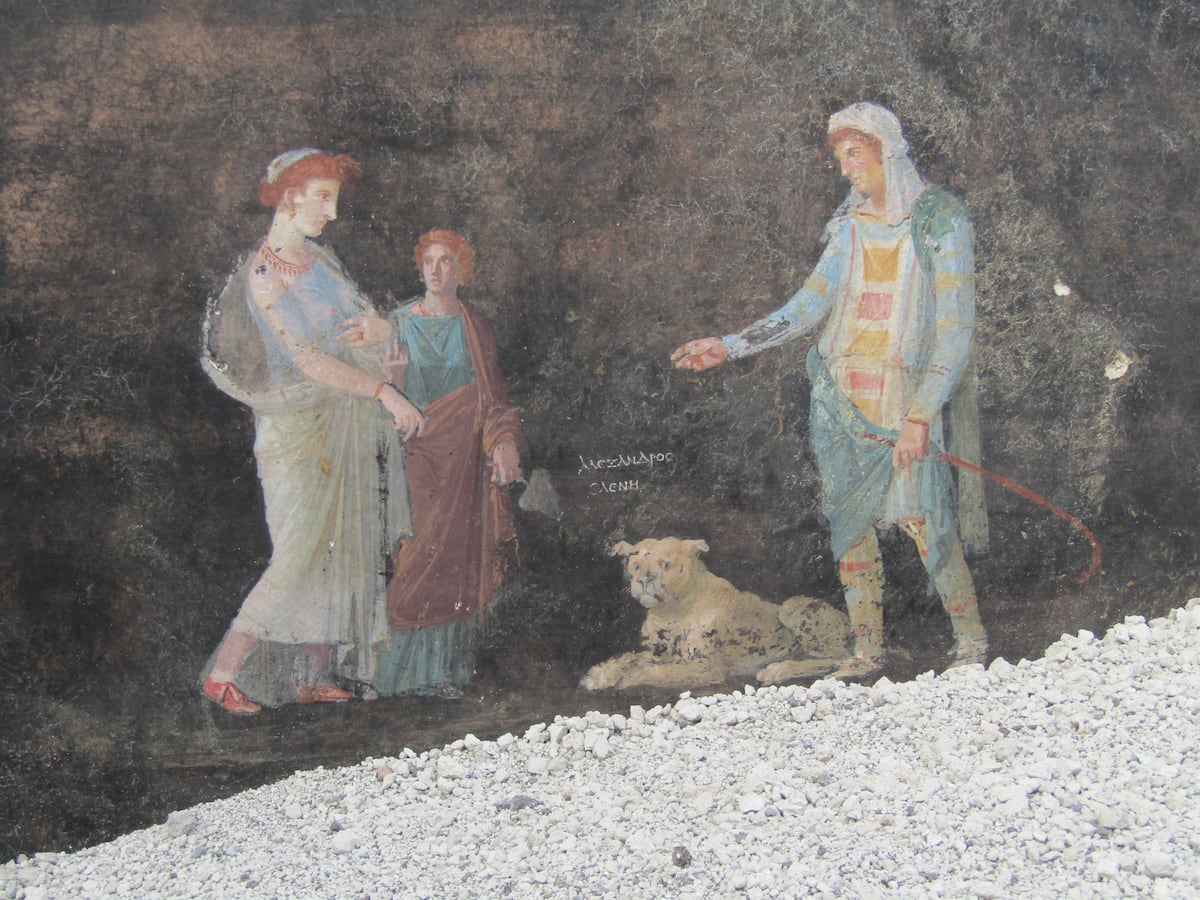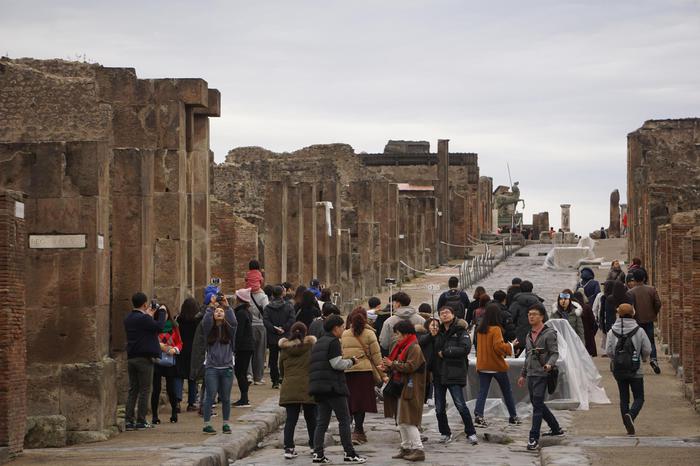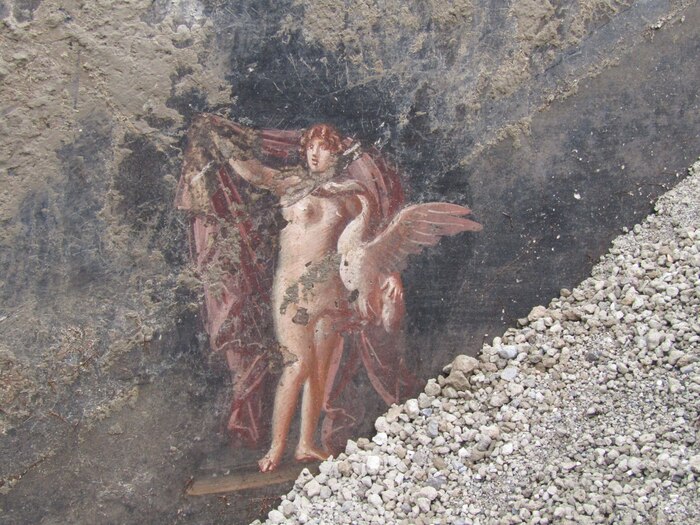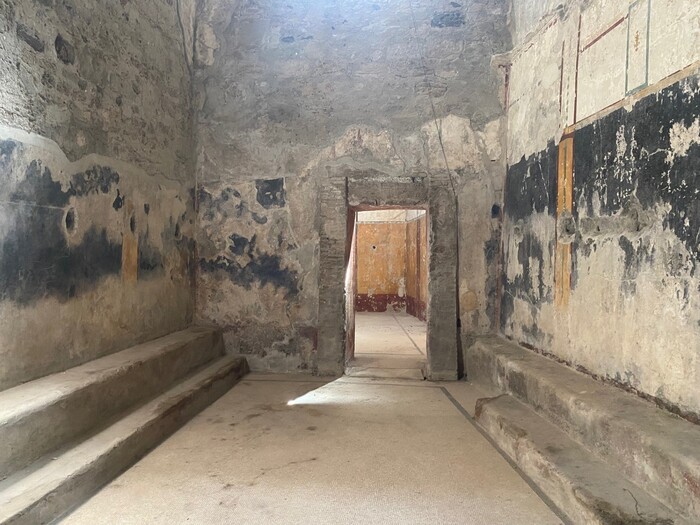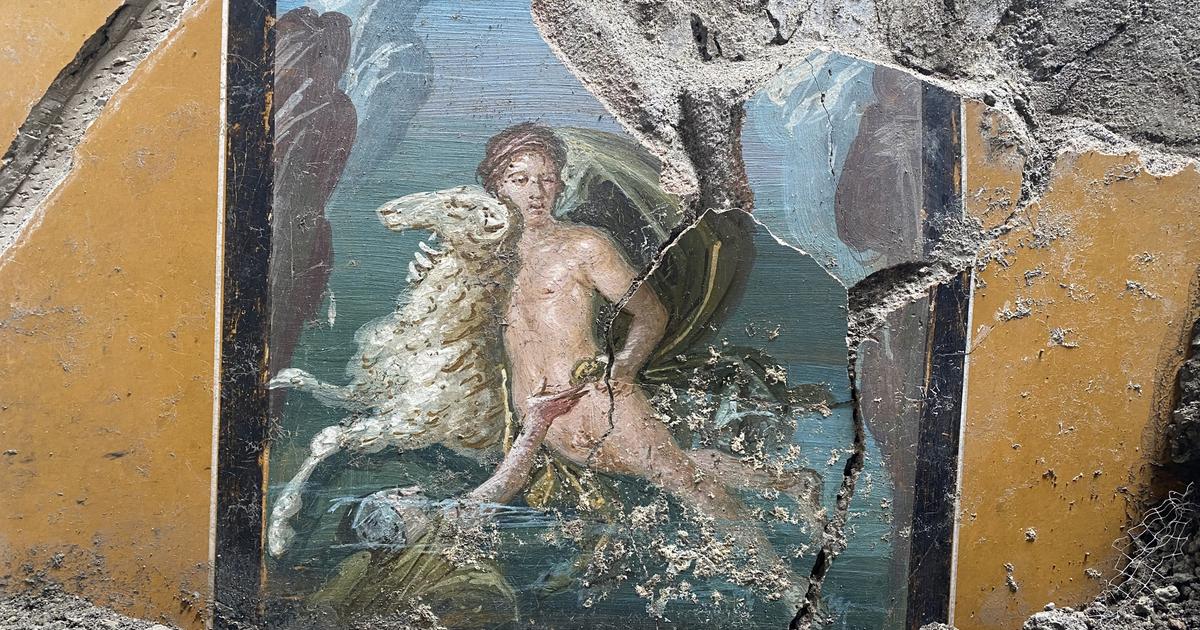The sea air of the Bay of Naples often works wonders for health, especially when covered with volcanic ash, the fallout of which freezes forever the few unfortunate trapped in a frightening demonstration of nature. Rather than the well-known eruption of Vesuvius in 79, it is a completely different context which this time allowed the archaeologists of Pompeii and the University of Valencia to unearth, in recent weeks, an extraordinarily well preserved skeleton during their excavation campaign at the Porta Sarno necropolis. Better still than the simple discovery of the well-preserved body of this 2000-year-old Roman, its precise identification has been established by archaeologists and epigraphists engaged in this campaign. The deceased was thus called Marcus Venerius Secundio.He died in his old age, about ten years before the volcanic destruction of the city, he was an imperial priest.
Read also: Two thousand years ago, in the Pompeii fast food restaurant
Deposited in the sealed chamber of a monumental tomb excavated on the eastern outskirts of Pompeii, along the Roman road that led to Sarno, the body of Marcus Venerius Secundio was partly mummified in a natural way over the years and then centuries that followed his entombment.
If this explains its quite exceptional state of preservation, it is not however impossible that its mummification was helped a little:
"We still have to determine whether the partial mummification of the deceased is due to an intentional treatment or not
", underlined the archaeo-anthropologist Llorenç Alapont, of the University of Valencia, in a press release from the Archaeological Park of Pompeii.
"From the sources, we know that certain textiles, such as asbestos, were used for embalming."
The Roman, over 60 years old when he died, in any case keeps some thin traces of his ears, just like the disheveled hair of a venerable old man.
“Even for those who, like me, have long specialized in funerary archeology, the extraordinary richness that this tomb presents to us, from the inscription to the burials, through the osteological remains and its painted facade, is quite simply exceptional ”
, greeted Llorenç Alapont.
The tomb of a Roman priest discovered in Pompeii
Go to the slideshow (5)
From public slave to opulent priest
Thanks to the epitaph engraved on the outside of the sepulcher, Latin archaeologists were able to decipher without too much difficulty the main features of the life of this ancient character. Long before he died among the notables of Pompeii, Marcus had been a public slave, that is to say a literate slave attached to the service of magistrates, those of the temple of Venus in his case. Freed from his slave status, he later joined the prestigious college of Augustales, the flamines - priests - in charge of imperial worship. This developed under the reign of Tiberius, after the death of Augustus, the first emperor, in 14 AD. However, no direct testimony allows to establish the source of the enrichment of Marcus Venerius Secundio, even if an archive of the Pompeiian banker Cecilius Giocondus,preserved in the form of a wax tablet, mentions the augustal - the imperial priest - found by archaeologists at Porta Sarno.
The epitaph also reveals that Marcus Venerius Secundio funded four days of Greek and Latin games in Pompeii, including shows, banquets, stage games, athletic competitions, sacrifices as well as theatrical performances in the Greek language. Considerable pomp for a former slave. Besides the biography of the deceased, the document would provide the first direct source on the use of the Greek language during a public event in Pompeii, in the 1st century AD. “
The fact that shows in Greek were organized testifies to the cultural, dynamic and open climate that was that of ancient Pompeii,
” Gabriel Zuchtriegel, director of the Pompeii Archaeological Park, said in the statement.
Read also: The Roman remains discovered in Herculaneum was an officer of the imperial fleet
An "exceptional" tomb
Without competing with the most remarkable decorations of the Roman villas of the region of Vesuvius, the tomb of this rich Roman - in the form of a residence - was painted in blue and green leaves. It still attests today, as washed out as it seems from the height of its 2000 years, of the opulence of the freed. The funerary furniture also imposes it, as evidenced by the presence of a pair of balsamari - small vases - in glass and some traces of fabric. Other remarkable remains, two cinerary urns counted by archaeologists, one of which,
“a beautiful glass vase”
, would have been associated with a woman named Novia Amabilis, identified by another epitaph inscription.
More unusual, the body of Marcus Venerius Secundio was not cremated, as dictated by traditional funeral practices of his time, but stored inside the monument. The hermetically sealed space in which he was found was located in a small, undecorated cubicle. According to the suggestions of the archaeologist Massimo Osanna, director general of Italian museums and former director of the Archaeological Park of Pompeii, the man could have felt alien to the social body of the city. The whole of the sepulcher has not yet revealed all its secrets. As the Italian Minister of Culture, Dario Franceschini, sums it up in his reaction to the discovery of the tomb of Marcus Venerius Secundio: “
Pompeii never ceases to amaze us”.

